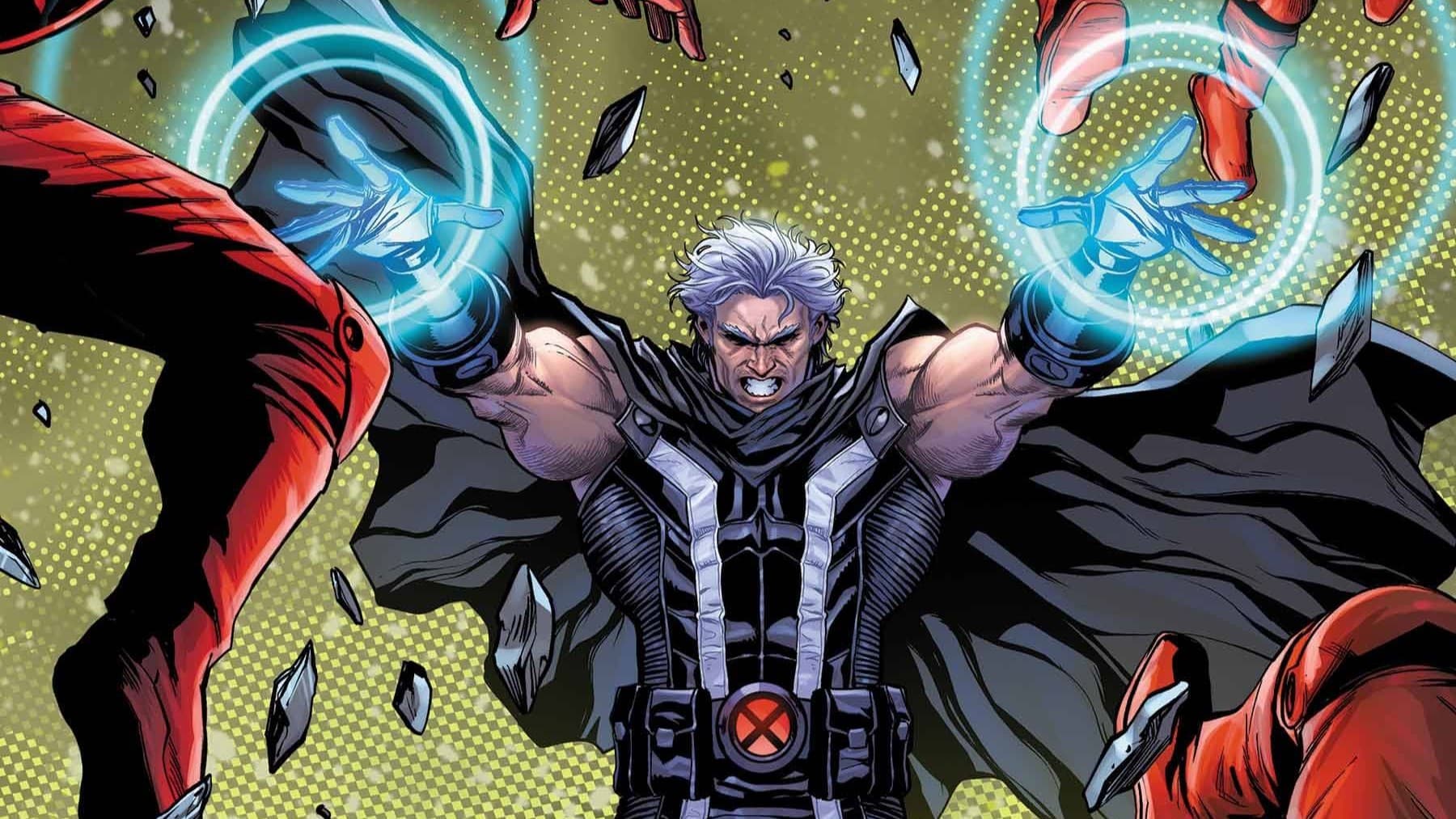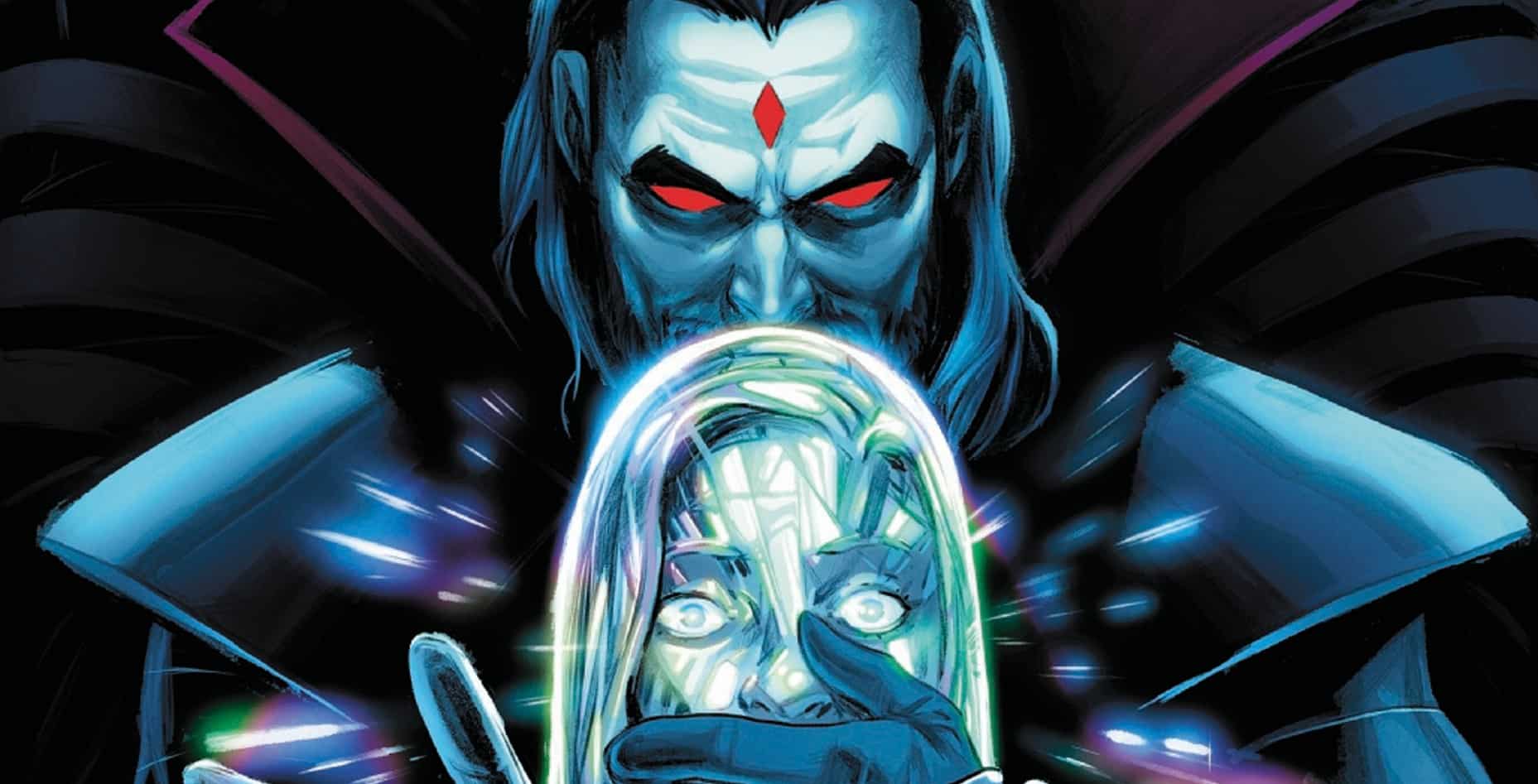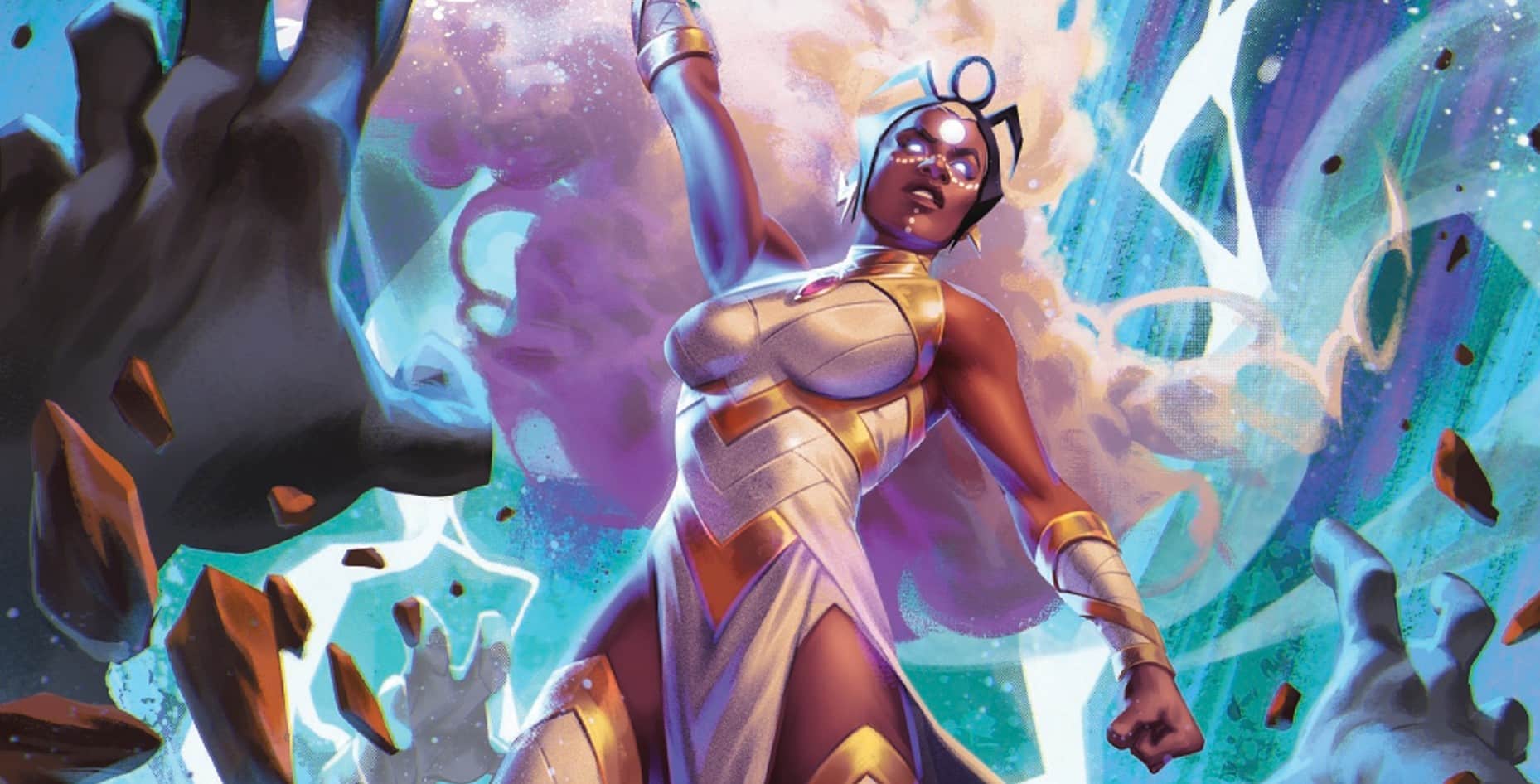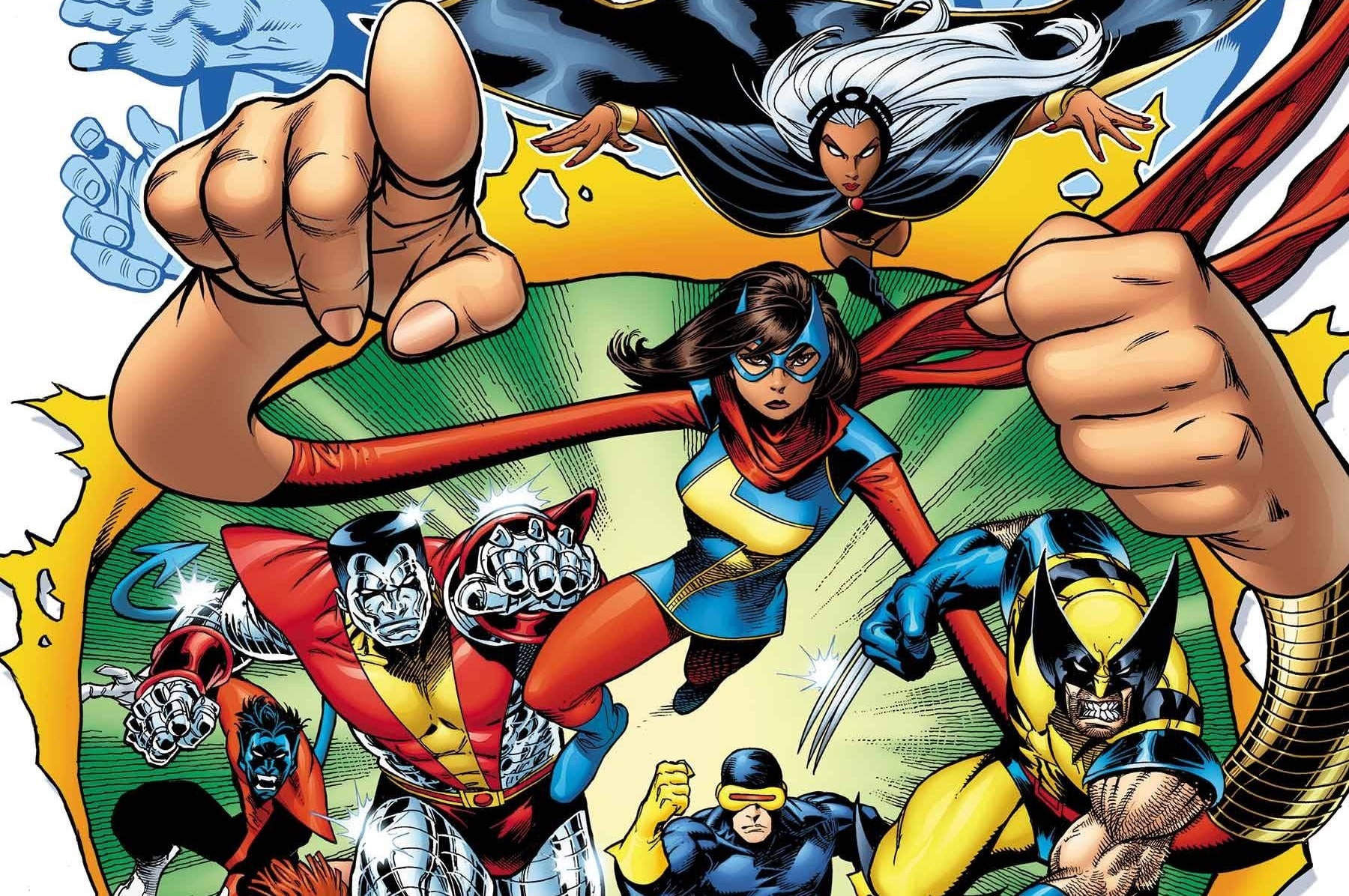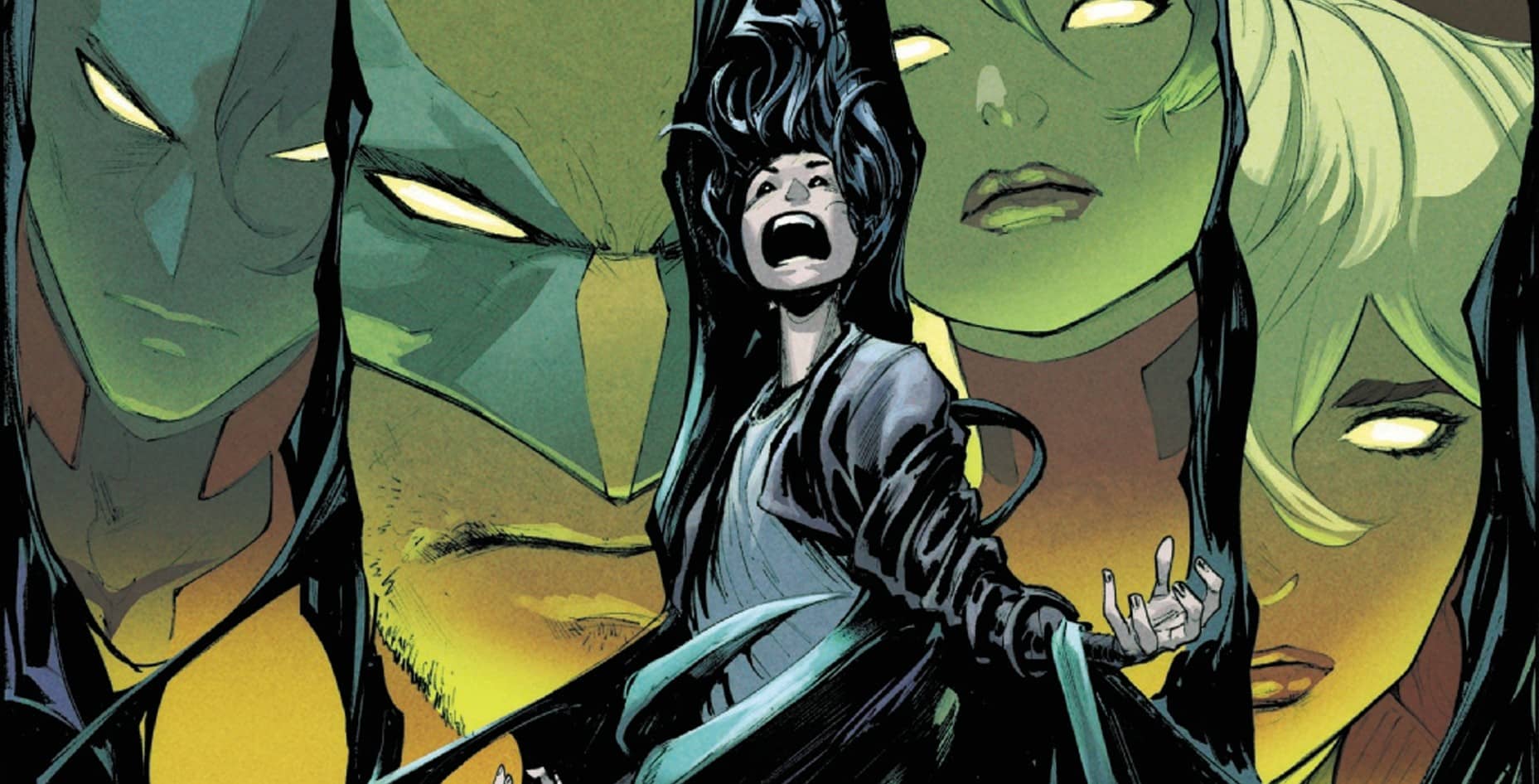“I will try again. It is all I can do.”
In 2019’s X-Men #1, the first comic post HoX/PoX, perhaps Magneto, floating above the fray while ripping the roof off of the (then, supposedly) last Orchis facility on Earth, adorned in glowing white, his power easily overwhelming his opponents…perhaps he was a new god.
Those he saved adored him, chanting his name, and he, as arrogant and self-righteous as ever, reveled in that adoration.
That was then, almost five years ago.
This is now.
No longer floating above the fray, Magneto is in the midst of his enemies. No longer wantonly wielding his gifts, he holds them close to his chest (literally), exuding precision, thoughtfulness, and care to preserve life — even the life of those who threaten his own. There are no chants here; simply the whispered wishes of an oppressed few, a hopeless lot who, finally, maybe, sees hope on the horizon.
Yet still, like another certain new god, he was resurrected, to save his people and lead them, quite literally, into a promised land, where hope, not terror, may riegn.
“I must be so careful with that hope.”
The Resurrection of Magneto does not redefine Magneto’s character — he emerges from this comic the same revolutionary anti-hero he’s been for decades now. His uniform is the same. His modus operandi — save mutants by any means — remains constant as it’s ever been. Yet the brilliance of this series was never about plotting out new ground; no, its brilliance lies in retracing, reframing, reaffirming the ground we thought we knew. This was less a resurrection and more a Renewal of Magneto — a reminder of why mutants do not consider him a terrorist, but a fighter, their fighter…
Their savior.
And in Ressurection of Magneto #4, we remember what it looks like when a fully healed Magneto decides to fight for salvation — both his and his people’s.
It’s maybe rote to call this comic series good, or exceptional, or well done, though it’s clearly all of these. No, Resurrection of Magneto transcends these terms to become something simpler, more pure: This comic, among Al Ewing’s finest, is necessary reading, for lovers of any kind — all kinds — of written lore.
Tale as Old as Time

There are two linear stories being told simultaneously.
First, there is the rescue mission, where Magneto, after being told of the horrors of Orchis, decides to see first hand what he’s missed. Remember, he’s been dead since he took out Uranos, so Genesis, the return of Apocalypse, the sins of Sinister — our boy has missed out on a lot. And yet…how little the world has changed. Mutants are again hated. Again held in gulags, their gifts kept from them, their captors, cruel despots as ever.
So much has changed, and yet it all feels too familiar.
In this context, Magneto’s actions are remarkably consistent with his past. He tries to be kind to his would-be captors, until they force his violent hand. Was there a better way to handle the situation? Was his confidence that his action wouldn’t cost innocent lives rooted in expertise or arrogance? Ambiguous, though smushing fascists into bloody, metal balls instantaneously, overkill or not, warranted or not, was absolutely appreciated.
This malevolence does not go unnoticed by Storm, who wonders through a glance if, after almost giving her life for his, anything actually did change about the man.
Magneto wonders the same.
The second story is an internal monologue of Magneto processing what’s happening to him in the context of all he’s gone though. He wants to be better. He is trying to be better. And yet…he is who he is, and he will do what he must.
He forgoes the white helmet of diplomacy and the black helmet of unmitigated violence. And as he dons his legendary red helmet, he changes the design, ever so slightly. One might not notice it at a quick glance, but if you were inclined to look, and stare, and compare, you would see that there is something different there. There’s been a change. He’s doing the best he can. Is his best enough?
Magneto wonders the same.
He is trying to be better, but trying might not be enough.
Trying might be the trap that keeps him from being better.
The Circle of Life

Sentinels have been an albatross around the neck of mutants for generations; and these Tony Stark-fueled ones are no different. It’s a little disconcerting to see three of the most powerful people in Marvel Comics lore struggle with one Sentinel while the Avengers (and other X-Men!) tear through them mercilessly, recently. This is less of a mark on this comic and more a mark on the inconsistent editing, tones, and storylines that have the end of the Krakoan era feeling sloppier, messier, and more disconnected than ever at exactly the wrong time. All that said, for the purposes of this story, the sentinel’s nigh-omnipotence works: the resurrected god facing off against the demon of his personal devil. That he would willingly form a circuit with a devil — with a human, let alone suggest it — signals character growth. One gets the feeling that maybe Magneto could have taken the Sentinel out easier, but that he wanted — needed — to let out a little aggression and reassure his comrades that he is, in fact, trying to be better.
And of those comrades — Storm and Blue Marvel are simply support in Resurrection of Magneto #4; no narratives, no points-of-view. This is disappointing, as the agency Storm had in the first issue (which I again maintain is one of the best written Storm-centric comics ever written) seems to have been forgotten completely. Given that the first three issues showed that this was her journey as much as his, it would have been nice to see her arcs introduced in the first issue (her relationship with Craig from NASA, her desire to bring all the dead back to life, her necessity to always be the leader) addressed in the final one. This doesn’t make the issue bad, but it does feel a bit, well, unfinished.
What doesn’t feel unfinished — and what’s been a consistent highlight of this book — is every single panel drawn by Luciano Vecchio. His work here and throughout the series has been magnificent if not — and I do not use this word lightly — perfect. Panel transitions, facial expressions (especially the way he draws Storm’s face), action scenes and, in what seems to be his specialty, the “power up” panels leading into action (see: Magneto flying into the Sentinel with iron fists; Magneto getting charged up by Storm and Blue Marvel.) The action scenes are plentiful, the pensive scenes carry weight. The destruction of the Sentinel, with a red blast forming an X and purple clouds framing the scene — again, perfect. The colors elsewhere in the issue are great too, though the palette Curiel and Aburtov pick from feels limited for some reason. Still, Resurrection of Magneto #4 is a great looking comic, with every brushstroke adding emphasis to every written word.
A masterpiece, certainly.
A Whole New World

Writing comics, for a truly creative creator, must be a special kind of hell — especially and specifically if the comic you’re writing stars a perpetually well-known and loved character. Given a blank sheet, with a world of possibility in your head you must…cut. Cut out some of the more ambitious ideas you have for the character, because those ideas might be controversial, and controversy does not coincide with establishing corporate profits.
So you play it safe.
Maybe you decide to take this character on a journey to someplace new, emotionally, maturing the character, or putting them in situations where their orthodoxy of action isn’t just challenged, but usurped. Ahh, but again, you cut that out too, lest the fans of your character will call for your head, claiming that you don’t know the character, that you hate the character, that you don’t have enough of a grasp of characterizations to write Garfield the Cat, let alone their favorite character. So those ideas don’t even make it to paper.
Again, you play it safe.
Eventually, given the limitations of corporate profits and toxic fandom, you end up at this milquetoast place, where your character goes through the motions of fighting some unambiguous evil, over which, with effort and grit, they’ll prevail, with every bit of their hair in place.
You played it safe…and now your comic is cut, found to be dull and uninteresting, and you, exasperated from the limits of what you can do, haunted by thoughts of what you could do, vow never to work for a major publisher again.
This is the story for many writers, I’m sure.
This is not the story of Al Ewing, nor the Resurrection of Magneto. Here, Ewing’s taken those limitations and made them strengths: the journey is now inward, the ground covered is familiar, the revelations feel new and necessary to the lore of the character. Growth is sometimes measured in leaps and bounds; growth also happens in inches, bit by bit, like Magneto changing his crown just enough so that the change is visible — but only if you know where to look.
Thus, for an example of how to tell a masterful, self-contained story for an established character; a story that doesn’t change them in grand yards but by meaningful inches and centimeters; for an example of how to find freedom in a place that’s becoming more and more confined by profits and fandom…
Well, you know where to look. The Resurrection of Magneto is complete, and comics as an artform are better for it.
Other Thoughts:
- Seriously, not seeing the Craig from NASA plot line resolved is frustrating. They still together? I have a sneaking feeling she’s about to go back to her toxic ex, but we will see.
- Curious why the cover art depicted a Magneto outfit not shown in the series.
- In case you’re wondering, yes, there were at least two Tarot references here.
- The first page is likely a reference to the Hierophant, a Pope-like figure connecting the world of humanity to the divine – which works if you consider mutanthood a bridge to godhood, or magneto’s resurrection as a bridge between life and death, or if you consider his actions – benevolent and violent alike – the bridge between where we are and where we want to be.
- The last page is The World, the card signifying the end of a cycle and the beginning of a new one – an appropriate, if obvious (but still fulfilling!) choice to end the series on.
- Kind of love how Magneto enters battle with all three helmets in tow, as if he’s still unsure of what path he’ll take until his hand is forced.
- I want someone to make a new Blue Marvel series if only to give my man a better outfit than cargo pants and a smedium vest.
A proud New Orleanian living in the District of Columbia, Jude Jones is a professional thinker, amateur photographer, burgeoning runner and lover of Black culture, love and life. Magneto and Cyclops (and Killmonger) were right. Learn more about Jude at SaintJudeJones.com.

